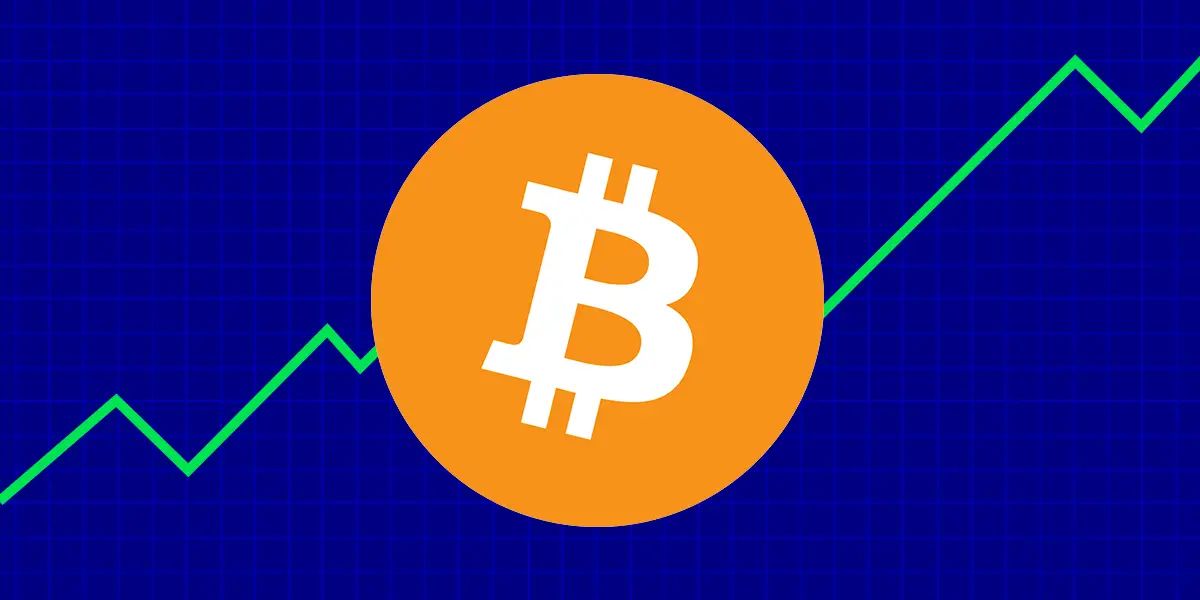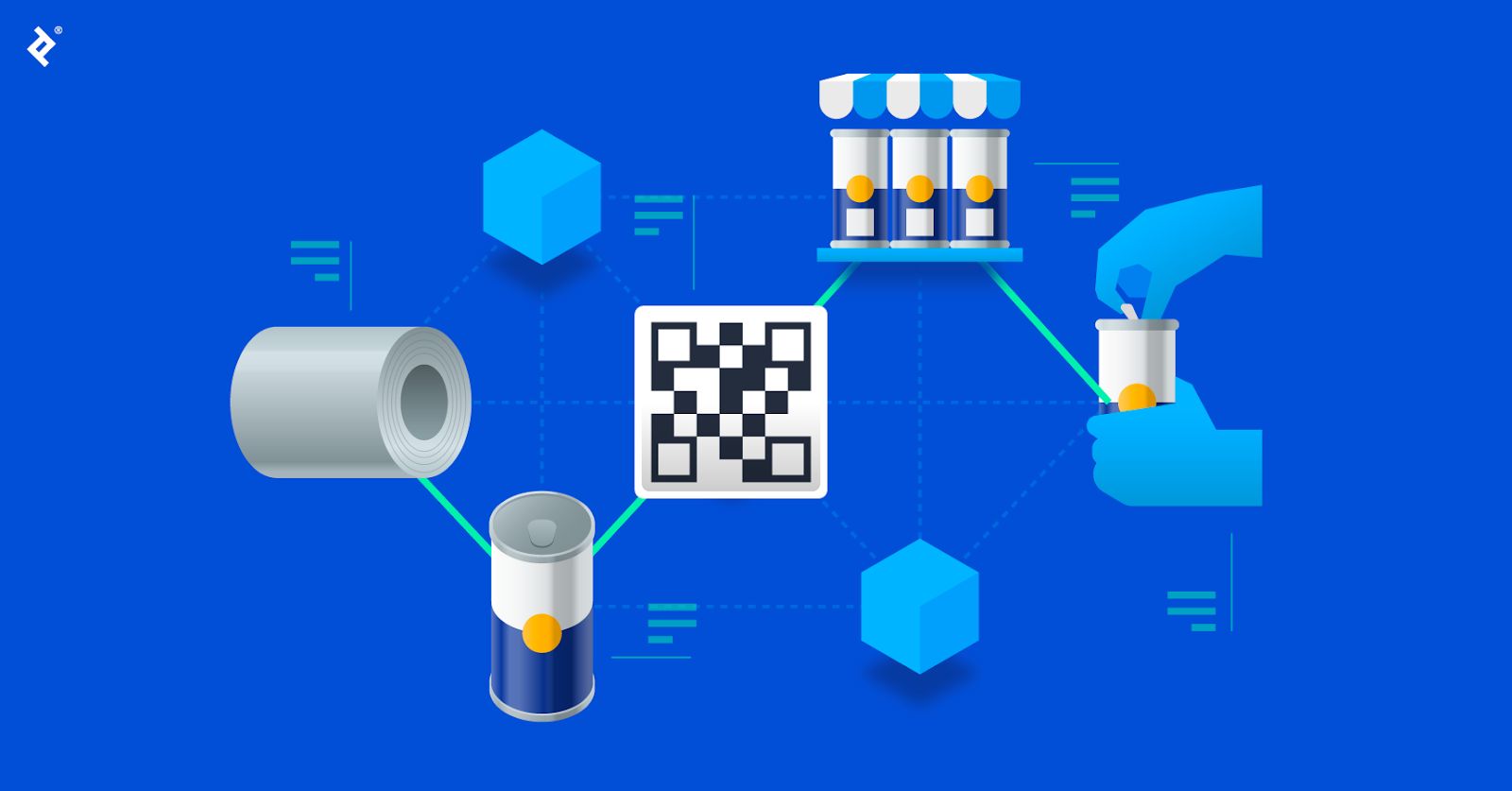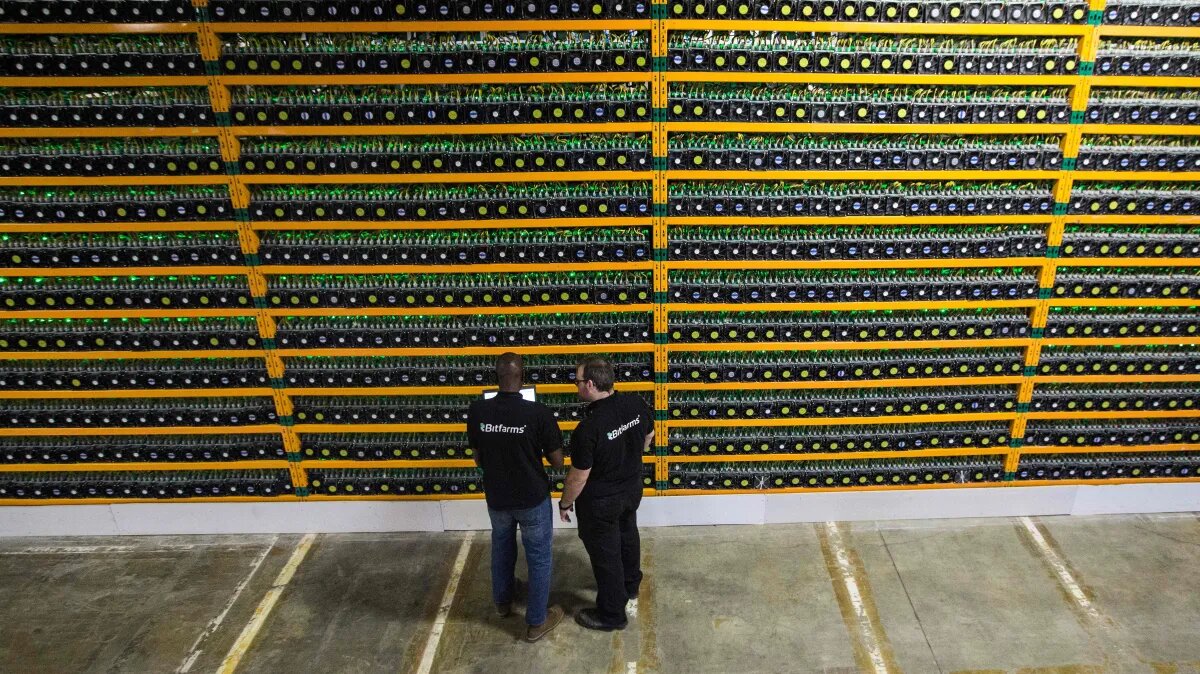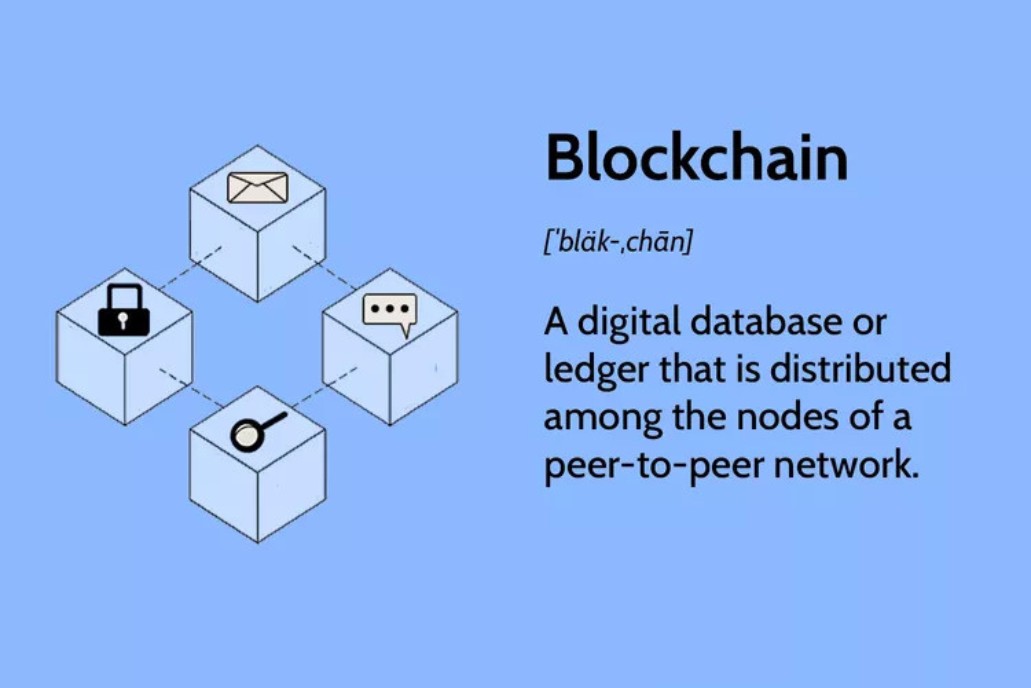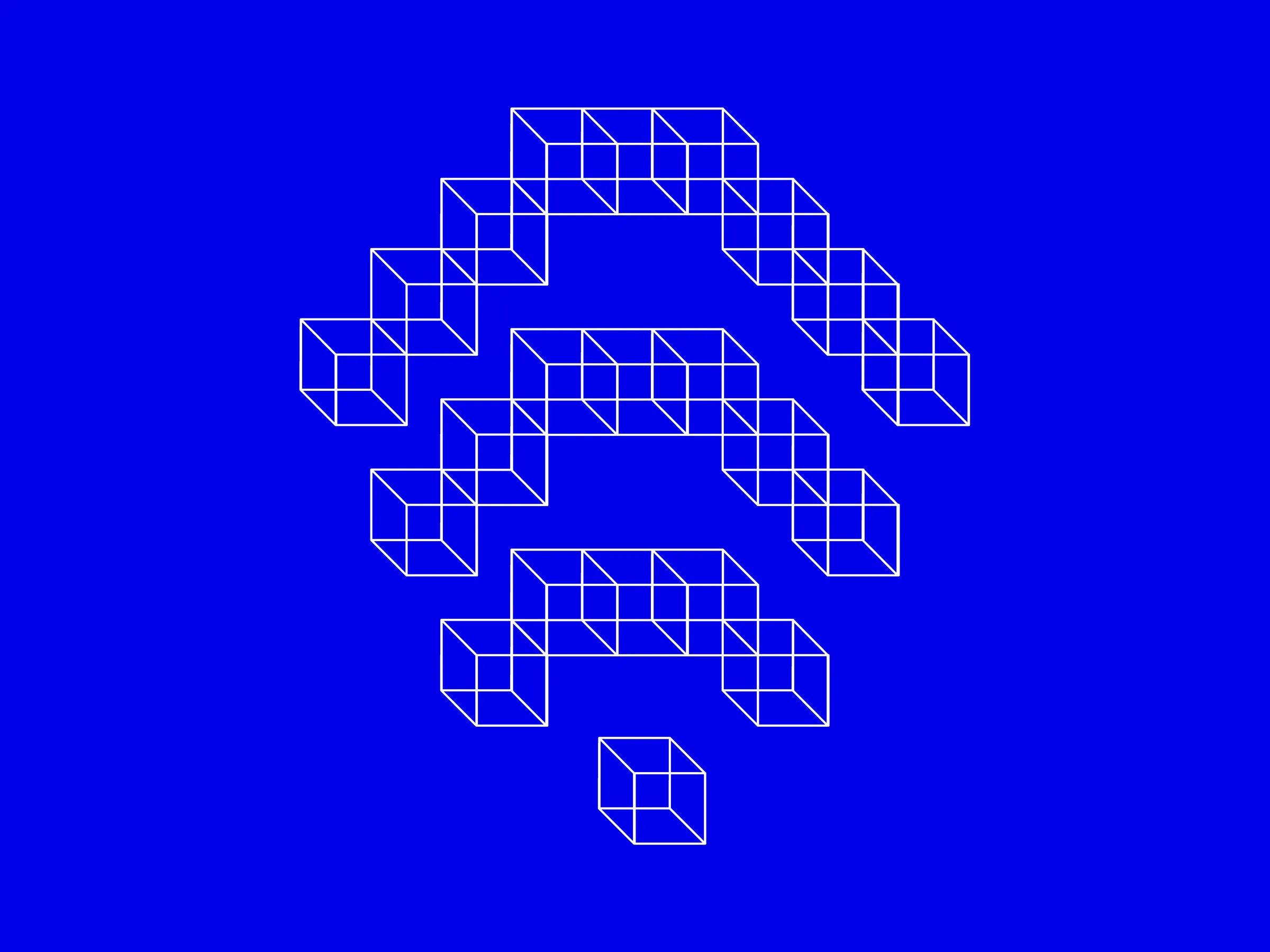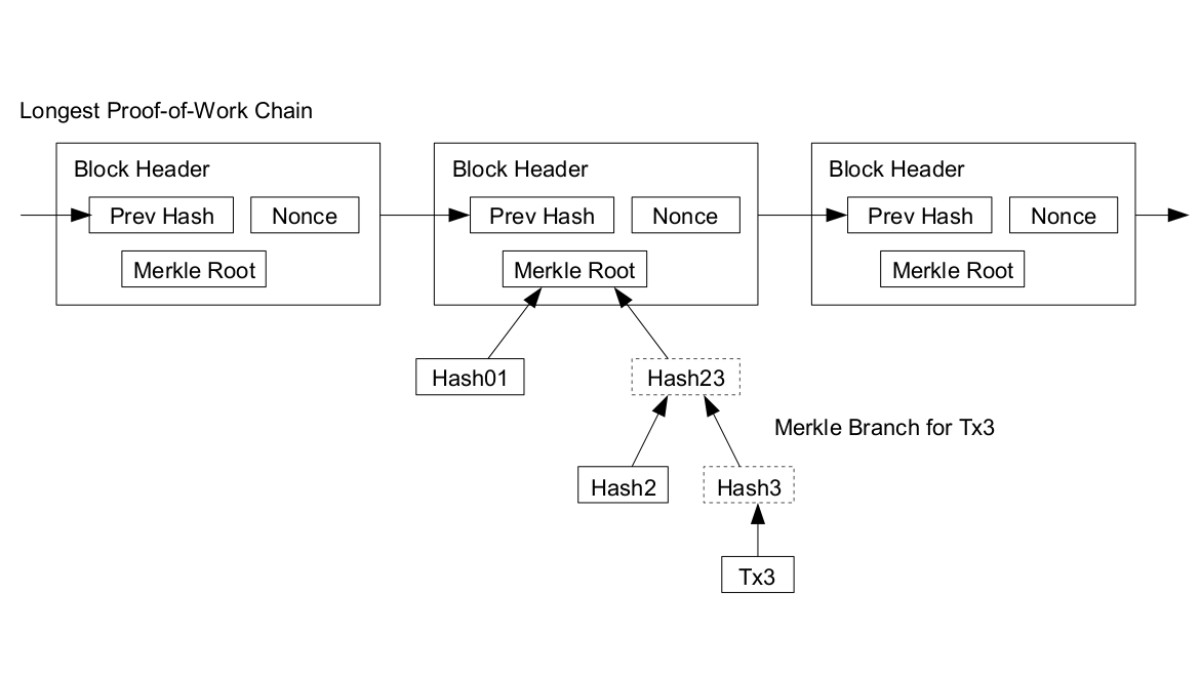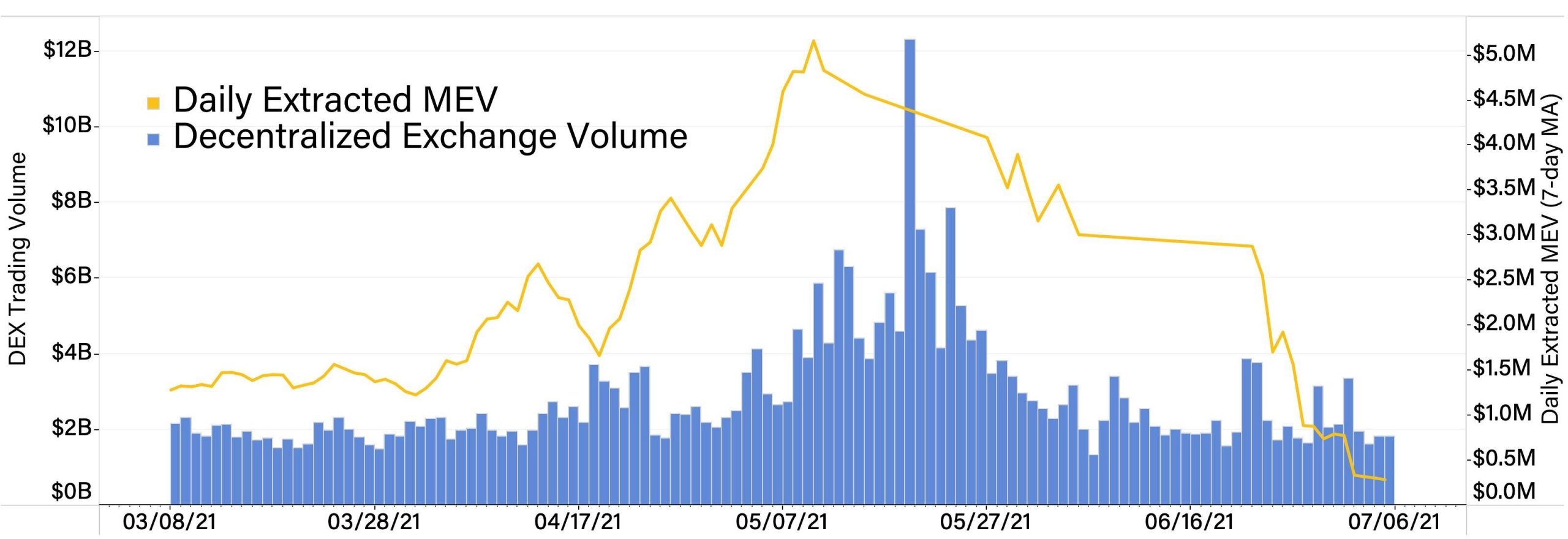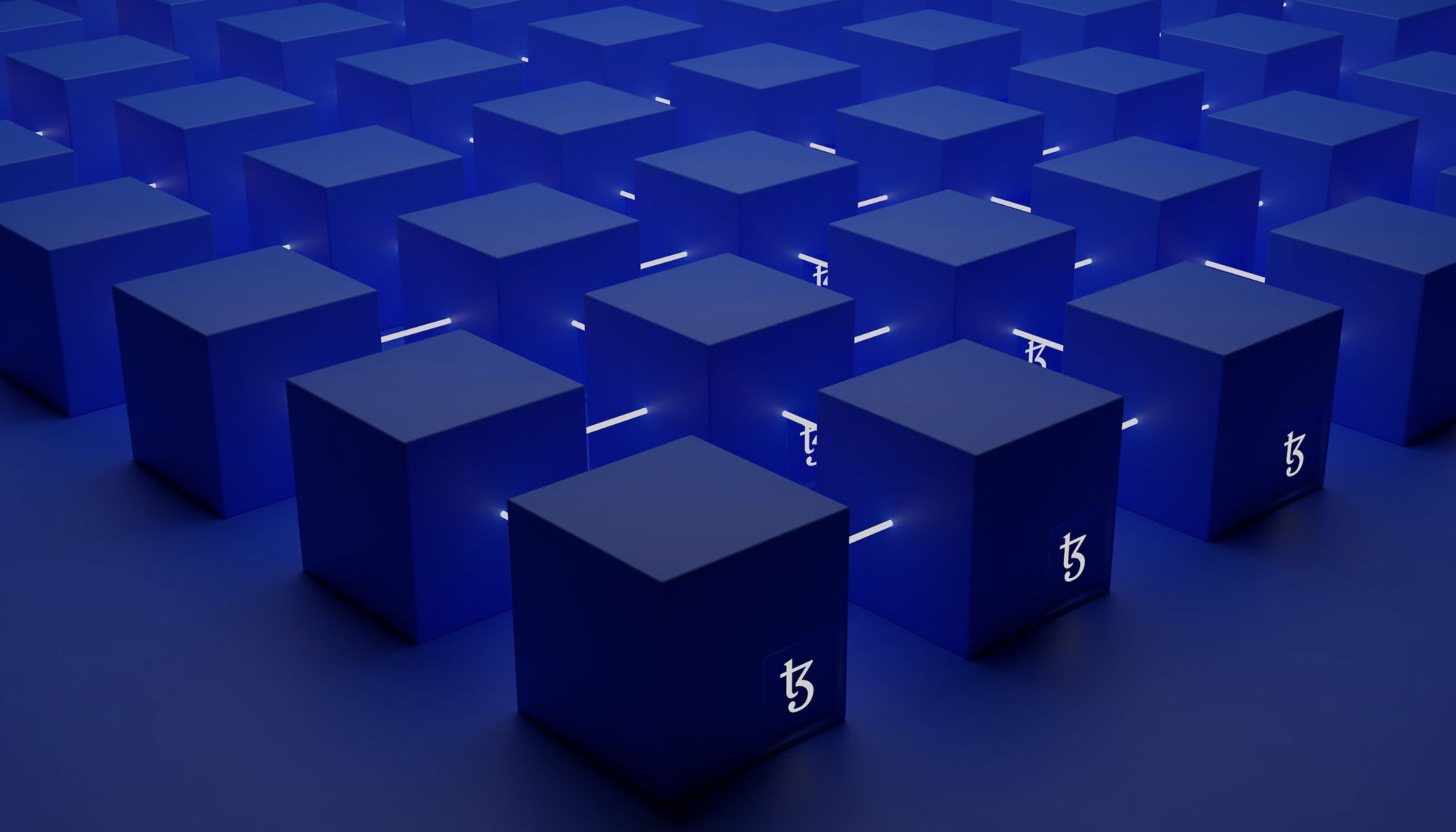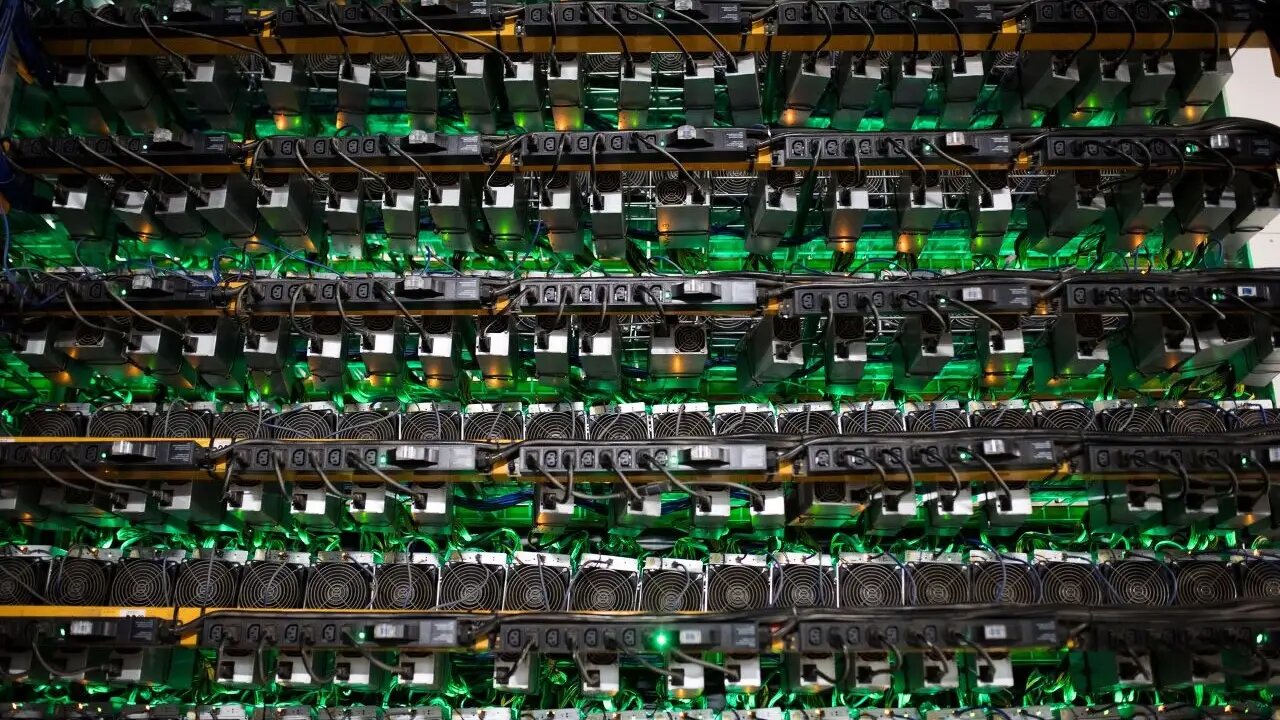Introduction
Blockchain technology has revolutionized various industries, and one key element of this technology is mining. Blockchain mining is the process through which new transactions are added to a blockchain and new coins are minted. In simple terms, miners are responsible for maintaining the integrity and security of a blockchain network.
If you’ve been intrigued by the concept of blockchain and want to get involved, becoming a miner could be an exciting opportunity for you. As a miner, you have the chance to play a crucial role in the validation and verification of transactions, while also earning rewards in the form of cryptocurrency.
However, becoming a miner isn’t as simple as it may sound. It requires technical knowledge, investment in hardware, and ongoing maintenance. In this article, we will guide you through the steps to become a miner and help you understand the essentials of this process.
Whether you’re a tech enthusiast, an aspiring cryptocurrency investor, or simply curious about blockchain technology, this guide will provide you with valuable insights to kickstart your mining journey.
What is blockchain mining?
Blockchain mining is the process of adding new transactions to a blockchain and securing the network through computational power. In traditional financial systems, such as banks, a centralized authority is responsible for validating and verifying transactions. In contrast, blockchain technology eliminates the need for a central authority by utilizing a decentralized network of nodes.
Miners play a vital role in this decentralized system. When a new transaction is initiated, it is broadcasted to the blockchain network. Miners then compete to solve complex cryptographic puzzles using their computational power. The miner who successfully solves the puzzle first gets to add the new block of transactions to the blockchain and is rewarded with newly minted cryptocurrency.
Mining serves several important functions within the blockchain ecosystem. Firstly, it validates and verifies transactions, ensuring that they are legitimate and following the predefined rules of the blockchain. In doing so, it helps prevent fraud and double-spending.
Secondly, mining also contributes to the security and immutability of the blockchain. Once a block of transactions is added to the chain, it becomes extremely difficult and computationally expensive to alter or manipulate it. This makes the blockchain tamper-proof and ensures the integrity of the recorded transactions.
Lastly, mining is the mechanism through which new coins are introduced into circulation. In cryptocurrencies like Bitcoin, for example, miners are rewarded with freshly minted Bitcoin for their efforts in solving the cryptographic puzzles. This incentivizes miners to participate and invest in the necessary hardware and computational resources.
It’s important to note that not all blockchains rely on mining as the mechanism for adding new transactions. Some blockchain systems, such as proof-of-stake (PoS) or delegated proof-of-stake (DPoS), use alternative consensus algorithms that don’t require extensive computational power. However, mining remains a fundamental aspect of many popular blockchain networks, including Bitcoin and Ethereum.
In the next section, we will explore the reasons why individuals choose to become miners and the potential benefits it can offer.
Why become a miner?
There are several reasons why individuals choose to become miners in the blockchain ecosystem. Let’s explore some of the key motivations:
1. Financial rewards: One of the primary incentives for becoming a miner is the opportunity to earn cryptocurrency rewards. Miners receive newly minted coins as a reward for successfully mining a new block of transactions. These rewards can be substantial, especially in the case of popular cryptocurrencies like Bitcoin or Ethereum. Additionally, transaction fees collected from users can also contribute to the earnings of miners.
2. Participation in the blockchain ecosystem: By becoming a miner, you actively participate in the validation and security of a blockchain network. You become an integral part of the decentralized ecosystem, ensuring the smooth functioning of transactions and maintaining the overall integrity of the blockchain.
3. Potential for price appreciation: As a miner, you may also have the opportunity to accumulate the cryptocurrency you mine and hold it as an investment. If the value of the cryptocurrency appreciates over time, your mining earnings could increase in value, potentially resulting in additional profits.
4. Diversification of income: Mining can provide an additional stream of income for individuals. While it does require initial investment in hardware and operational costs, successful mining operations can generate a steady flow of cryptocurrency earnings, diversifying one’s income portfolio.
5. Technical and educational benefits: Mining requires a solid understanding of blockchain technology and the technical aspects involved. By becoming a miner, you gain knowledge and hands-on experience in setting up and maintaining mining rigs, installing mining software, and staying up-to-date with the latest developments in the blockchain space.
6. Support for the network: As a miner, you contribute to the overall security and resilience of a blockchain network. By dedicating your computational power to solving cryptographic puzzles, you actively participate in the network’s consensus process, helping to maintain the decentralization and trustworthiness of the blockchain.
While there are numerous benefits to becoming a miner, it’s important to acknowledge the potential challenges and risks involved. Mining can be resource-intensive, requiring a significant investment in hardware and energy consumption. It may also involve technical complexities and ongoing maintenance. However, for those who are passionate about blockchain technology and have the resources to commit to mining, the potential rewards and involvement in this exciting field can be well worth the effort.
Steps to become a miner
If you’re interested in becoming a miner, here are the essential steps you need to take:
- Understand the basics of blockchain technology: Before diving into mining, it’s crucial to have a solid understanding of how blockchain technology works. Familiarize yourself with concepts like decentralized networks, consensus algorithms, and the role of miners in validating transactions.
- Choose the right hardware for mining: The next step is to select the appropriate hardware for mining. This typically involves investing in powerful computer processors (CPUs) or specialized mining hardware known as application-specific integrated circuits (ASICs). Research the mining requirements of the cryptocurrency you wish to mine and choose hardware that is capable of meeting those requirements.
- Set up a mining rig: Once you have the necessary hardware, you’ll need to set up a mining rig. This involves assembling your hardware components, connecting them, and ensuring proper ventilation and cooling to prevent overheating. Additionally, consider factors such as electricity consumption and noise levels when selecting the location for your mining rig.
- Join a mining pool: While it is possible to mine independently, joining a mining pool can increase your chances of earning rewards. Mining pools consist of a group of miners who combine their computational power to mine blocks collectively. This way, they can solve puzzles more efficiently and share the rewards among members based on their contributions.
- Install mining software: Your mining rig needs software to connect to the blockchain network and perform the mining process. Install the appropriate mining software for your hardware and configure it to connect to your chosen mining pool.
- Start mining: Once your mining rig is set up and connected to the network, you can begin mining. The mining software will utilize your hardware’s computational power to solve cryptographic puzzles and validate transactions. Keep in mind that mining can be a time-consuming process, so be patient and regularly monitor the performance of your rig.
- Maintain and optimize your mining rig: It’s crucial to regularly maintain and optimize your mining rig to ensure optimal performance. This includes cleaning your hardware, updating drivers and software, and monitoring temperature and power consumption. Additionally, staying informed about new mining techniques and strategies can help you maximize your mining efficiency.
By following these steps, you’ll be well on your way to becoming a miner in the blockchain ecosystem. Remember that mining requires technical knowledge, investment, and ongoing commitment. Stay informed, adapt to changes in the industry, and continuously evaluate the profitability of your mining operation.
Understand the basics of blockchain technology
Before embarking on your journey to become a miner, it’s essential to have a solid understanding of blockchain technology and its underlying principles. Blockchain is a decentralized digital ledger that records transactions across multiple computers, ensuring transparency, security, and immutability.
To grasp the basics of blockchain technology, start by familiarizing yourself with the following key concepts:
Decentralization: Unlike traditional centralized systems, blockchain operates on a decentralized network of computers known as nodes. Each node holds a copy of the entire blockchain, and they work together to validate and record new transactions.
Consensus mechanisms: Blockchain networks rely on consensus mechanisms to agree on the validity of transactions. Popular consensus algorithms include proof-of-work (PoW), proof-of-stake (PoS), delegated proof-of-stake (DPoS), and more. Understanding the consensus mechanism used by the blockchain you’re interested in mining is crucial.
Cryptographic principles: Cryptography is a fundamental component of blockchain technology. It ensures the security and privacy of transactions. Concepts such as public-key cryptography, hashing, and digital signatures are integral to understanding blockchain’s security features.
Blocks and transactions: Transactions are bundled into blocks and added to the blockchain in a sequential order. Each block contains a unique identifier, a timestamp, and a reference to the previous block, forming an interconnected chain of blocks.
Mining and rewards: Miners play a crucial role in maintaining the blockchain network. They validate transactions, solve cryptographic puzzles, and add new blocks to the chain. Miners are rewarded with newly minted cryptocurrency and transaction fees for their efforts.
Smart contracts: Many blockchain platforms support smart contracts, which are self-executing contracts with predefined conditions written in code. These contracts automatically execute transactions when the conditions are met, enabling programmable and decentralized applications (DApps).
By understanding these foundational concepts, you’ll have a solid grasp of how blockchain technology operates and the role that miners play within the ecosystem. This knowledge will help you navigate the technical aspects of mining and make informed decisions as you progress in your mining journey.
Resources such as online courses, tutorials, and whitepapers can provide in-depth insights into blockchain technology. Stay updated with the latest industry developments, follow reputable sources, and engage in blockchain communities to expand your understanding further.
Choose the right hardware for mining
Choosing the right hardware is crucial for successful mining operations. The performance and efficiency of your mining rig will directly impact your mining capabilities and profitability. Here are some factors to consider when selecting your mining hardware:
1. Hashing power: Hashing power, measured in hashes per second (H/s), determines the computational capacity of your mining hardware. Higher hashing power allows for faster and more efficient mining. Research the specific requirements of the cryptocurrency you plan to mine to ensure your hardware can provide sufficient hashing power.
2. Energy efficiency: Mining can be energy-intensive, resulting in high electricity costs. Opt for mining hardware that offers good energy efficiency to minimize operational expenses. Look for devices with high hash rates and low power consumption to strike a balance between performance and energy efficiency.
3. Compatibility: Ensure that the mining hardware you choose is compatible with the mining software and blockchain network you plan to join. Different cryptocurrencies may have specific hardware requirements or optimizations that you should consider.
4. Cost considerations: Mining hardware can vary greatly in price, so determine your budget and evaluate the cost-effectiveness of different options. Consider factors such as upfront costs, ongoing maintenance expenses, and potential resale value when assessing the overall cost of your mining hardware.
5. Longevity and durability: Mining can put significant stress on hardware components, so choose reliable and durable equipment. Look for reputable brands that offer warranty coverage and have a track record of producing high-quality mining hardware.
6. Scalability: Consider the scalability of your mining operation when selecting hardware. If you plan to expand your mining operation in the future, choose hardware that allows for easy scalability by adding more devices or upgrading existing ones.
7. Noise and cooling: Mining rigs generate heat and noise, so take into account the cooling requirements and noise level of the hardware you choose. Proper ventilation and cooling systems are essential to prevent overheating and ensure the longevity of your mining equipment.
8. Research and comparison: Before making a purchase, conduct thorough research and compare different hardware options. Read reviews, consult mining forums, and analyze performance benchmarks to identify the most suitable hardware for your mining goals and budget.
It’s important to note that the mining landscape is continuously evolving, and new hardware options may emerge. Stay updated with the latest advancements and consider the potential return on investment (ROI) of different hardware options. Regularly reassess your hardware choices as technology progresses to maximize your mining efficiency and profitability.
Set up a mining rig
Setting up a mining rig is a crucial step in becoming a miner. A mining rig is a specialized computer system designed to mine cryptocurrencies efficiently. Here are the key steps to set up your mining rig:
1. Gather the necessary components: Start by gathering the essential hardware components for your mining rig. This typically includes a motherboard, CPU, RAM, power supply unit (PSU), storage, and graphics processing unit (GPU). Research the best components for your mining requirements and ensure they are compatible with each other.
2. Assemble the hardware: Carefully assemble the hardware components by following the instructions provided with each component. Connect the motherboard, CPU, RAM, and other devices as per the manufacturer’s recommendations. Ensure that all connections are secure and the components are properly seated.
3. Install the operating system (OS): Choose an operating system that is compatible with your mining software and install it on your mining rig. Popular choices include Windows, Linux, or specialized mining-focused OS distributions. Follow the installation process and ensure that the OS is up to date with the latest security patches.
4. Configure BIOS settings: Enter the BIOS settings of your mining rig and configure them appropriately. Enable any required settings for mining operations, such as enabling multiple GPUs if you are using them. Consult the motherboard documentation for specific instructions on accessing and configuring the BIOS settings.
5. Set up mining software: Install the mining software of your choice on your mining rig. There are various mining software options available, each designed to work with specific cryptocurrencies and mining algorithms. Configure the software with the necessary parameters, such as your mining pool and wallet address, to start mining.
6. Optimize your mining settings: Fine-tune your mining rig to optimize its performance and efficiency. This includes adjusting GPU settings, such as memory clock and power limit, to achieve the best hash rates while minimizing power consumption. Experiment with different settings and monitor the performance of your mining rig to find the optimal configuration.
7. Ensure proper cooling: Mining rigs generate significant heat, so it’s crucial to ensure proper cooling to prevent overheating. Install adequate cooling solutions, such as fans or liquid cooling systems, to maintain optimal operating temperatures. Monitor the temperature of your mining rig regularly and take necessary measures to prevent excessive heat buildup.
8. Test and monitor: Before starting full-scale mining, test your mining rig with a small workload to ensure everything is working as expected. Monitor the performance, temperature, and stability of your mining rig during the testing phase. Make any necessary adjustments or troubleshooting if you encounter any issues.
Setting up a mining rig requires technical know-how and attention to detail. Take your time to carefully assemble and configure your mining rig. Stay informed about the latest advancements in mining hardware and software to constantly improve the performance and efficiency of your rig.
Join a mining pool
Joining a mining pool is a common choice for miners, especially for those with limited resources or looking to increase their chances of earning rewards. A mining pool is a group of miners who combine their computational power to mine blocks collectively. Here are the key steps to join a mining pool:
1. Research and choose a mining pool: Start by researching and choosing a mining pool that is compatible with the cryptocurrency you plan to mine. Consider factors such as the pool’s reputation, size, fees, payout methods, and the hashing power of the pool.
2. Create an account: Visit the website of the mining pool you have chosen and create an account. Sign up by providing the necessary information, such as your email address and a secure password. Some mining pools may require additional verification steps.
3. Configure your mining software: Once you have created an account, you need to configure your mining software to connect to the mining pool. Your mining software will have specific parameters for connecting to a pool. These parameters usually include the pool’s URL, your account username, and a worker name or ID.
4. Join the mining pool: After configuring your mining software, connect it to the mining pool by running the software. Your mining software will establish a connection with the pool’s server using the parameters you provided. It will then begin working on the mining tasks assigned by the pool.
5. Monitor your mining progress: Once you have joined the mining pool, you can monitor your mining progress through the pool’s website or dashboard. The mining pool will provide detailed statistics such as your hashrate, shares submitted, and earnings. It’s important to regularly check these statistics to ensure that your mining rig is functioning properly.
6. Understand payout and rewards: Familiarize yourself with the payout structure and reward system of the mining pool. Mining pools typically have a threshold for earning rewards, which is the minimum amount you need to accumulate before receiving a payout. Different pools may have different payout schedules and methods, so be sure to understand the specifics of your chosen pool.
7. Optimize your mining settings: While mining in a pool, you may want to optimize your mining settings to ensure maximum efficiency and earnings. Adjusting parameters such as intensity, thread concurrency, or GPU memory can help fine-tune your mining rig’s performance. Experiment with different settings and monitor your hashrate and earnings to find the optimal configuration.
8. Stay updated and involved: Joining a mining pool provides an opportunity to engage with other miners in the community. Participate in pool-specific forums or communities to stay updated on news, mining strategies, and emerging technologies. Sharing experiences and knowledge with other miners can help improve your mining skills.
Joining a mining pool can increase your chances of earning rewards by collectively pooling computational power with other miners. Regularly assess the performance and efficiency of your mining rig, and consider switching pools if needed. Remember, mining in a pool requires ongoing monitoring and adjustment to optimize your earnings.
Install mining software
Installing mining software is a critical step in becoming a miner. The mining software allows your mining rig to connect to the blockchain network and perform the necessary computations to mine cryptocurrency. Here are the key steps to install mining software:
1. Determine the mining software: Research and choose the mining software that is compatible with your mining hardware and the cryptocurrency you intend to mine. Popular mining software options include CGMiner, BFGMiner, EasyMiner, and Claymore’s Miner, among others.
2. Download the software: Visit the official website of the mining software you have chosen and locate the download section. Ensure that you download the software from a trusted source to avoid malware or compromised versions. Choose the appropriate version for your operating system.
3. Configure the mining software: Once the software is downloaded, extract the files and open the configuration file. The configuration file contains parameters that need to be set according to your specific mining setup. Key parameters include the mining pool URL, your account details, and any specific settings required by the mining software.
4. Customize the settings: Each mining software provides a range of customizable settings that allow you to optimize your mining rig’s performance. These settings may include adjusting the intensity, fan speed, or power usage of your mining hardware. Consult the mining software’s documentation or online resources for guidance on optimal settings.
5. Test the mining software: Before starting full-scale mining, run a test to ensure that the mining software is correctly installed and configured. Start with a low mining intensity or a small workload to avoid straining your hardware. Monitor the performance, temperature, and stability of your mining rig during the test to identify any issues or necessary adjustments.
6. Run the mining software: Once the mining software is configured and tested, you can start mining by running the software. Launch the software and allow it to connect to the mining pool you joined. The software will utilize your mining rig’s computational power to solve the cryptographic puzzles and contribute to the blockchain network.
7. Monitor and optimize: Regularly monitor the performance of your mining software and rig to ensure optimal efficiency. Keep an eye on key metrics such as hashrate, accepted shares, and rejected shares. Adjust the settings, if necessary, to optimize the performance of your mining rig and fine-tune the software for the best results.
8. Stay updated: Mining software is continually evolving, with new versions and updates released regularly. Stay updated with the latest software releases and security patches. Regularly check the mining software’s official website, forums, or social media channels for announcements and updates.
Installing mining software is a crucial step that enables your mining rig to contribute to the blockchain network. Take the time to understand the software, configure it properly, and optimize its settings. By staying informed and monitoring your mining software’s performance, you can enhance your mining experience and maximize your earnings as a miner.
Start mining
Once your mining rig is set up and the software is installed and configured, you are ready to start mining. Here are the key steps to begin your mining journey:
1. Ensure the mining rig is running smoothly: Before starting mining operations, perform a final check to ensure that your mining rig is running smoothly. Verify that all components are properly connected, temperatures are within safe limits, and the mining software is successfully connected to the mining pool.
2. Validate the mining status: Check the mining software to verify that it is producing valid shares and submitting them to the mining pool. A valid share represents a completed calculation that contributes to the mining efforts. Monitoring the mining software will indicate whether your mining rig is successfully participating in the mining process.
3. Monitor mining performance: Keep a close eye on the performance of your mining rig. Observe the hashrate, which indicates the speed at which your rig can solve cryptographic puzzles. Higher hashrates contribute to a higher likelihood of mining a block and receiving rewards. Regularly track your hashrate to identify any fluctuations or issues with your mining rig.
4. Track your mining rewards: As you mine, keep track of the rewards accumulated in your mining pool account. Most mining pools provide dashboards or online interfaces where you can monitor your earnings. These platforms typically display your share of the rewards based on your mining contributions.
5. Patience and persistence: Mining can be a time-consuming process, particularly for cryptocurrencies that require significant computational power. It may take time before you receive your first mining rewards. Exercise patience and understand that mining involves an element of luck, as rewards are distributed based on chance. Consistent mining and persistence are key to maximizing your chances of earning rewards.
6. Stay informed and adapt: In the dynamic world of cryptocurrency mining, it’s essential to stay updated with the latest mining trends, algorithms, and advancements. Stay informed about changes in mining difficulty, reward structures, and new mining opportunities. Adapt your mining strategy as needed to ensure continued competitiveness in the mining landscape.
7. Regular maintenance: Ongoing maintenance is crucial for the smooth operation of your mining rig. Regularly clean the hardware components, check for dust accumulation, and ensure proper ventilation to avoid overheating. Update the mining software and drivers as new versions are released to benefit from performance improvements and security patches.
8. Evaluate profitability: Continuously assess the profitability of your mining operations. Consider the cost of electricity, mining pool fees, and the potential returns from mining activities. If necessary, adjust your mining setup or switch to alternate cryptocurrencies that offer better profitability based on market conditions.
Starting mining is an exciting step in your mining journey. Stay committed, monitor your mining rig’s performance, and adapt to changes in the cryptocurrency landscape. With persistence, knowledge, and ongoing optimization, you can increase your chances of earning rewards as a miner.
Maintain and optimize your mining rig
Maintaining and optimizing your mining rig is essential to ensure its long-term performance and profitability. Regular upkeep and optimization can maximize your mining efficiency and minimize downtime. Here are some key steps to maintain and optimize your mining rig:
1. Regular hardware maintenance: Perform routine maintenance on your mining rig to ensure its optimal performance. Clean the components, such as the fans and heat sinks, to prevent dust accumulation that can hinder cooling. Check for loose connections and ensure proper seating of components to prevent hardware issues.
2. Monitor temperature and airflow: Regularly monitor the temperature of your mining rig components to prevent overheating. Ensure that the airflow is adequate by positioning fans strategically and maintaining proper ventilation. Consider using specialized cooling solutions, such as additional fans or liquid cooling, to keep temperatures in check.
3. Update software and drivers: Keep your mining software and device drivers up to date with the latest versions. Software updates often bring performance improvements, bug fixes, and security patches. Regularly check for updates and install them to benefit from enhanced stability and efficiency.
4. Optimize mining software settings: Experiment with different mining software settings to find the configuration that maximizes your hash rate and power efficiency. Adjust parameters such as intensity, thread concurrency, or memory clock for GPUs to achieve optimal performance. Monitor the impact of these changes and fine-tune your settings accordingly.
5. Consider power and energy efficiency: Mining can be energy-intensive, impacting your profitability. Consider optimizing power usage by adjusting settings such as power limits or undervolting your mining hardware if applicable. Research energy-efficient mining equipment or explore renewable energy options to reduce electricity costs.
6. Stay updated with mining trends and algorithms: Stay informed about the latest developments and trends in the mining industry. Keep an eye on changes in mining algorithms, as they can significantly impact the profitability of your mining operations. Stay connected with mining communities, forums, and resources to learn about new opportunities and strategies.
7. Regularly assess mining profitability: Evaluate the profitability of your mining activities on an ongoing basis. Consider factors such as electricity costs, mining pool fees, and market conditions. Monitor the cryptocurrency market and assess the potential returns to make informed decisions about mining activities.
8. Backup your earnings: Ensure you have a secure backup for your mining earnings. Set up a digital wallet and regularly back up your wallet data or private keys to avoid the risk of losing your hard-earned rewards. Implement security measures like two-factor authentication to protect your mining earnings.
Maintaining and optimizing your mining rig requires continuous effort and vigilance. Implement a regular maintenance routine, stay informed about the latest mining developments, and pursue energy-efficient practices. With diligence and ongoing optimization, you can enhance the performance and profitability of your mining rig as a dedicated miner.
Conclusion
Becoming a miner in the blockchain ecosystem can be an exciting and potentially rewarding endeavor. Mining plays a vital role in the validation and security of blockchain networks, and it offers opportunities for financial gain, active participation in the decentralized ecosystem, and technical knowledge acquisition.
Throughout this guide, we have explored the essential steps to become a miner, including understanding the basics of blockchain technology, choosing the right hardware, setting up a mining rig, joining a mining pool, installing mining software, starting mining operations, and maintaining and optimizing your mining rig.
It’s important to note that the mining landscape is dynamic and ever-evolving. Stay informed about the latest developments, trends, and advancements in the mining industry. Regularly reassess your mining setup, hardware, and mining pool to ensure optimal performance, efficiency, and profitability.
Mining also comes with its challenges. It requires technical knowledge, ongoing maintenance, and the commitment of financial and energy resources. Additionally, the mining landscape is becoming more competitive, making it crucial to adapt and optimize your mining strategies continuously.
As you embark on your mining journey, remember to exercise patience and persistence. Mining can take time, and success is not guaranteed overnight. Stay committed, monitor your mining rig’s performance, and optimize your operations to increase your chances of earning rewards.
Keep learning, networking with other miners, and staying abreast of industry developments. The blockchain revolution continues to evolve, and as a miner, you are part of this transformative journey. With dedication, knowledge, and ongoing optimization, you can make the most of your mining experience in the ever-growing world of blockchain technology.







